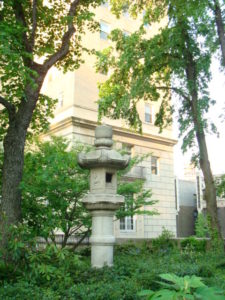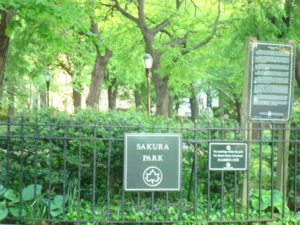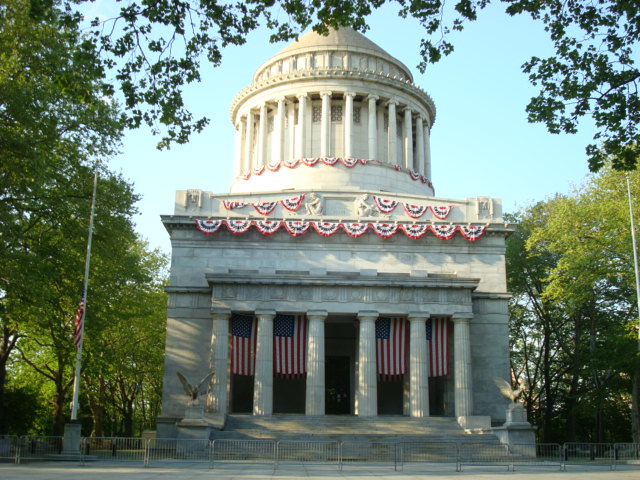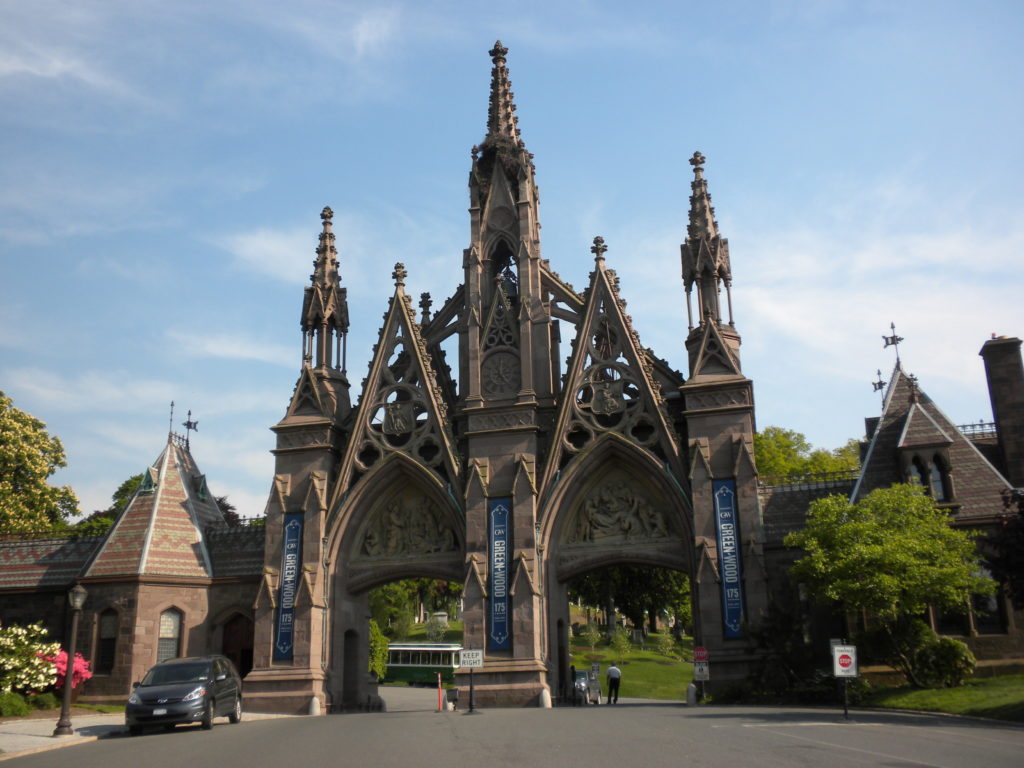New York’s Sakura Park, and Hop to Brooklyn
In New York recently for the annual Biographers International Organization conference, I followed some research leads for my biography of Eliza Scidmore.
One morning I went to the Brooklyn Museum with a writing colleague to track down an important document. Another day I took a very long walk — 80 blocks, in fact — from my hotel to W. 122nd Street. My destination was Sakura Park, on Manhattan’s Upper West Side.
We hear a lot about the cherry trees Japan donated to Washington in 1912. But few people know a similar shipment of trees was planted in New York around the same time.
It was the project of a group that called themselves the Committee of Japanese Residents of New York. They arranged to donate a couple thousand cherry trees for the Hudson-Fulton Celebration. The 1909 event marked the centennial of Robert Fulton’s demonstration of a steam-powered boat on the Hudson River and the 300th anniversary of Henry Hudson’s exploration of the river.
New York’s Cherry Trees
The committee of Japanese residents included Jokichi Takamine. He was one of the founders of the Japan Society in New York, which Eliza Scidmore joined. His elegant Beaux-Arts townhouse at 334 Riverside Dr. garnered attention for its splendid Japanese-style interior. An acquaintance of Scidmore, Dr. Takamine played a critical role in bringing cherry trees to Washington.
The cherry trees bound for New York in 1909 never made it to their destination. According to a plaque at Sakura Park, the steamer carrying them from Japan was lost at sea. Ironically, the initial cherry trees sent to Washington also hit a major snag and had to be destroyed because of infestation by pests.
Both projects got back on track when Japan agreed to send replacement trees. Dr. Takamine spoke at an April 1912 dedication ceremony in New York.
Those trees were scattered around Upper Manhattan, mostly in Central Park and Riverside Park. Some were planted in a park annex east of Grant’s Tomb, now known as Sakura Park. It’s just north of the massive Riverside Church.

Japan donated a stone lantern to Sakura Park in 1960 (Photo: Diana Parsell)
With the image of Washington’s Potomac Park in mind, I was expecting to see a large sweep of cherry trees. But Sakura Park is small, a two-acre neighborhood park in Morningside Heights.
In 1960 the park got a torii, or stone lantern, donated by Japan. Crown Prince Akihito, now the emperor, attended the dedication ceremony along with his wife, Michiko.
Today Sakura Park has a pavilion for concerts by students of the neighboring Manhattan School of Music.
Off to Brooklyn
That trip to Brooklyn? I went to the Brooklyn Museum to get a copy of the art catalog listing nearly 300 Oriental treasures Eliza Scidmore sold at auction in New York in 1925. She used the proceeds to pay for a permanent move to Geneva, Switzerland. She was living there at her death in 1928.
In Brooklyn I also went with my writing-group colleague Bonny Miller to visit Green-Wood Cemetery, now a National Historic Landmark.
Established in 1838, Green-Wood was the fashionable place to be buried. By mid-century it attracted more than half a million visitors a year, rivaling Niagara Falls in popularity.
Among its 560,000 graves are those of such famous people as Boss Tweed, Horace Greeley, Louis Comfort Tiffany and Leonard Bernstein (whose grave is marked with a surprisingly small stone set in the ground). We paid a visit because the subject of Bonny ‘s research, a pioneering female American composer named Augusta Browne, is buried there.



